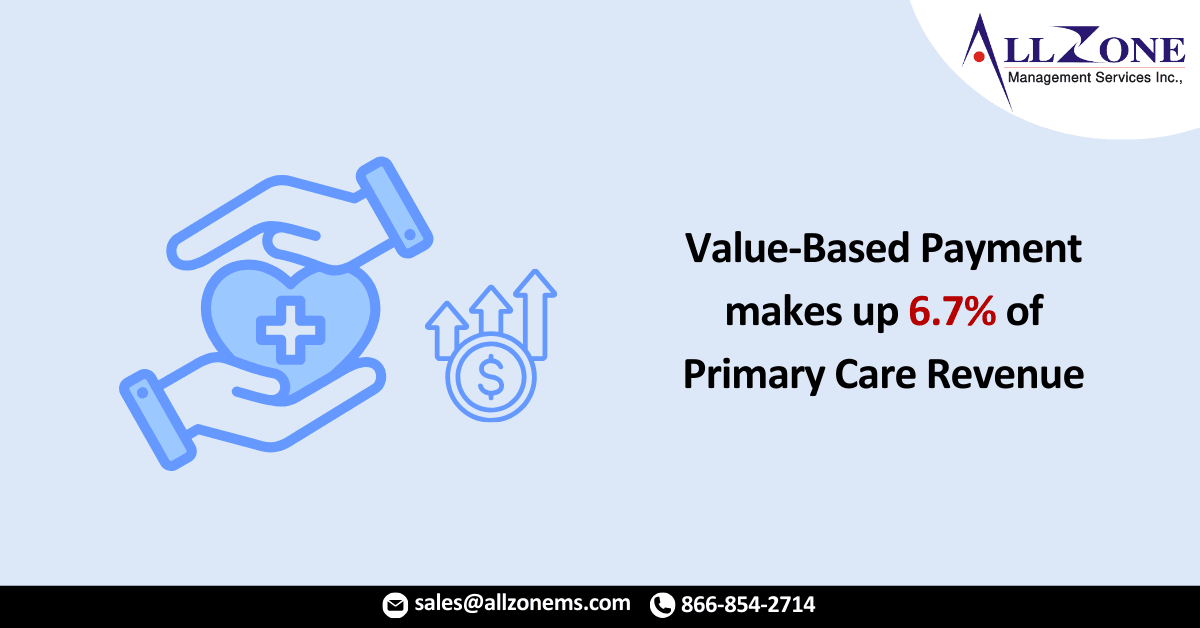Value-based payment is severely lacking as a percentage of total medical revenue across practices as providers face scheduling and billing challenges.
The transition to value-based payment is moving at a snail’s pace despite healthcare’s long journey with the transition away from fee-for-service, new survey data indicates.
Value-based payment made up just 6.74 percent of total medical revenue at primary care practices, according to MGMA’s report “Patient Access and Value-Based Outcomes Amid the Great Attrition.”
Surgical specialties had even less value-based payment as a percentage of total medical revenue, reporting just 5.54 percent of revenue from value-based contracts. Meanwhile, non-surgical specialties had 14.74 percent of revenue from value-based contracts in 2021.
MGMA analyzed 2021 data from more than 2,300 organizations from a variety of specialties and practice types. The industry group found that the median revenue amount from value-based contracts across all practices was $30,922 per full-time equivalent (FTE) provider.
The report also found that most medical practices (62 percent) have the same share of compensation tied to quality. About a third (35 percent) has increased compensation tied to quality in the past two years and 2 percent have actually decreased the percentage.
Medical practices still face many challenges—especially in light of the COVID-19 pandemic—with moving away from fee-for-service reimbursement to value-based payment.
The medical workforce is grappling with burnout, staffing declines, decades-high inflation, operational challenges and a dynamic reimbursement environment that affects providers across the board.
Scheduling errors and billing denials could help relieve the financial burden on health groups, moving them toward value-based care that promotes the welfare of physicians, staff, and patients.
Practices are seeing a return to normal volumes and productivity compared to the height of the COVID-19 pandemic in 2020. However, the report showed that practices are struggling to get their patients into the office in a timely manner compared to before.
Appointment availability for new patients—measured as the third-next-available appointment—increased by two days from 6.1 days in 2020 to 8.1 days a year later. Additionally, time in the waiting area also increased by four minutes year-over-year, with a median wait time of 16 minutes by 2021. Wait times in exam rooms increased by two minutes to 9 minutes, on average.
Time-to-third for established patients rose just slightly from 4 days in 2020 to 4.43 days in 2021, MGMA also reported.
In addition to scheduling snafus, practices also saw an uptick in appointment cancellations. Cancellation rates, due to either patient or practice canceling, rose significantly for non-surgical specialties from 8.3 percent in 2020 to 17.7 percent in 2021.
For primary care practices, cancelations actually dropped slightly from 8.3 percent in 2020 to 8.0 percent a year later. For surgical specialties, it rose by 1.4-percentage points to 8.4 percent in 2021.
Meanwhile, no-show rates held steady across practice types, ranging from 5.0 percent for surgical specialties to 6.0 percent for non-surgical specialties.
The report also found that it took longer to post charges in 2021 for third-party payment from the time a patient is seen. Primary care practices faced a low of 5.0 days, which was actually down slightly from 5.2 days in 2020, while non-surgical specialties reported 11.6 days and surgical specialties reported 10.4 days. Both were up from 6.8 days the previous year.
Practices also experienced a rise in the number of claims denied on first submission. Each specialty faced an increase in this case, with non-surgical specialties getting hit the hardest. Both non-surgical and surgical specialties reported a rate of 8.14 percent. For non-surgical specialties, the rate was up from 3.00 percent in 2020. For surgical specialties, it was up from 4.16 percent.
Primary care practices had a rate of 8.00 percent, an increase from 4.00 percent the previous year.
Meanwhile, all practices also reported decreases between 5.25 and 11.13 percentage points in the collection of copayments at the time of service, MGMA reported.
Scheduling challenges, coupled with billing and collection lags, impacts not only revenue cycle management but also the adoption of value-based contracts, which require upfront investments to support quality care and oftentimes some level of financial risk.
For More Information: https://revcycleintelligence.com/news/value-based-payment-makes-up-just-6.7-of-primary-care-revenue

